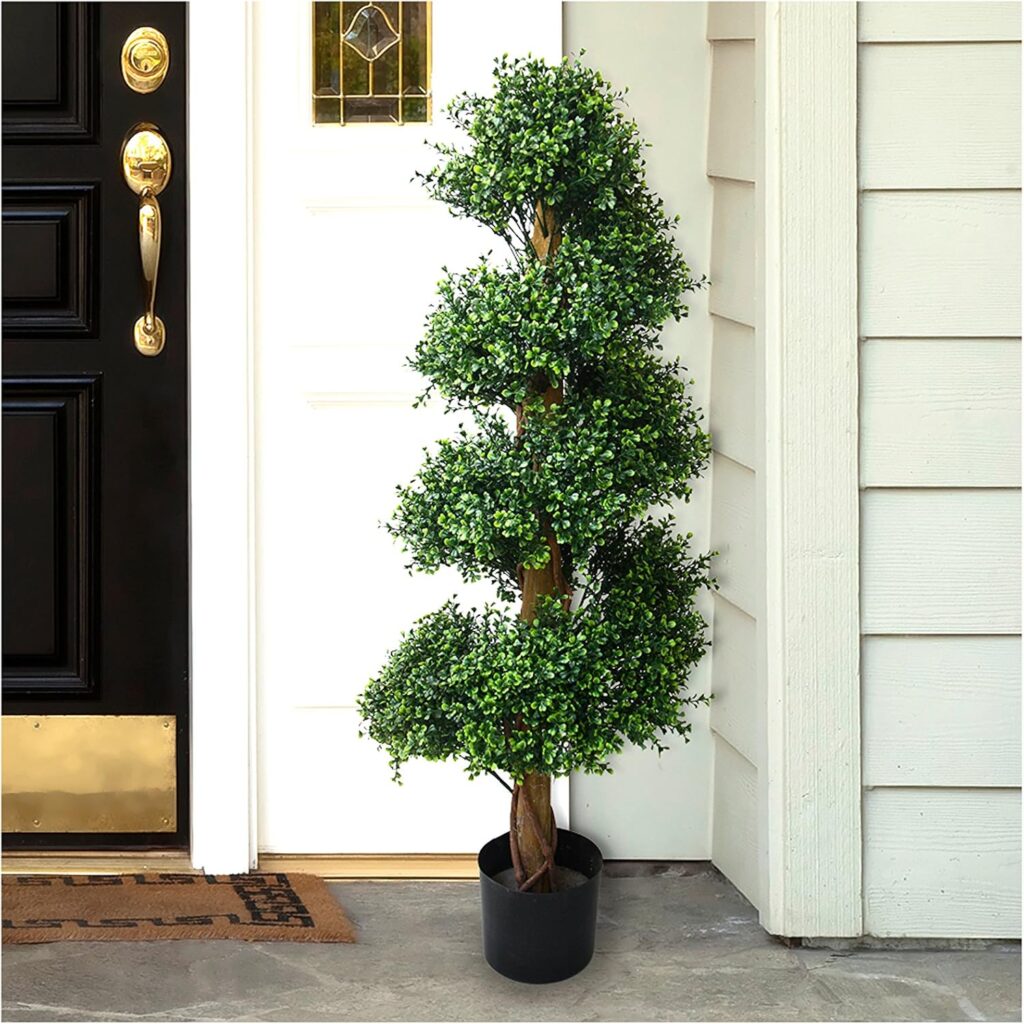Best Artificial Plants Outdoor: UV-Resistant Solutions for Stunning B2B Spaces in 2025
If you manage a hotel, retail space, or event venue, outdoor beauty matters. But real plants can be costly, hard to maintain, and quickly fade under sun and rain. This is where artificial plants outdoor become a smart B2B investment. They save costs, maintain vibrant looks, and keep your brand image flawless year-round.
At Botanic Blossoms, we’ve worked with B2B clients in North America, Europe, and the Middle East to design commercial spaces that stay lush—without seasonal replacements. Let’s explore what makes the best artificial plants for outdoor use in 2025 and how your business can benefit.
Why Artificial Plants Outdoor Are Booming in B2B Spaces
Today’s outdoor artificial plants are worlds apart from old plastic fakes. Advanced materials like UV-stabilized polyethylene (PE) and new color infusion technologies mean these plants resist sun damage and look incredibly realistic. Reports from Architectural Digest confirm that UV-resistant plants can reduce replacement cycles, saving businesses thousands every year.
The U.S. Department of Energy even highlights how well-placed outdoor greenery can lower building cooling costs—an unexpected bonus for commercial properties.
Client Success Story: Hotel Rooftop in Dubai
A 5-star hotel in Dubai approached Botanic Blossoms after real plants on their rooftop terrace kept burning out under extreme heat. We replaced their real foliage with custom-made UV-resistant PE artificial plants outdoor. Eighteen months later, the foliage still looks pristine despite 45°C heat. The client reports saving over $8,000 annually on maintenance and replacements while maintaining a luxurious guest experience.
This project shows that high-quality artificial plants outdoor are more than decorative—they’re strategic business assets.
Top B2B Use Cases for Artificial Plants Outdoor
Here’s how businesses worldwide are transforming spaces with artificial greenery:
- Hotels & Resorts: poolside hedges, rooftop lounges, spa terraces—all needing UV-safe foliage.
- Event Venues: outdoor arches, floral backdrops, garden paths, wedding installations that must endure heat and wind.
- Restaurants & Cafés: patio dividers, balcony décor, and outdoor walls offering lush vibes without ongoing care.
- Retail Centers: large faux trees in courtyards, mall entrances, or outdoor walkways, keeping a high-end feel through every season.
Insights from Houzz show consumers now expect commercial outdoor spaces to look perfect. Businesses using artificial plants outdoor meet those expectations—and protect their brand reputation.
Materials That Make or Break Outdoor Faux Plants
Material choice is everything for B2B buyers. Here’s how the top materials compare for artificial plants outdoor:
| Material | UV-Resistance | Waterproof | Durability | Best For |
|---|---|---|---|---|
| Polyethylene (PE) | ✅ Yes | ✅ Yes | 🌟 High | Trees, hedges, large installations |
| PVC | ⚠️ Limited | ✅ Yes | ⚠️ Medium | Seasonal décor, garlands |
| Silk | ❌ No | ❌ No | ❌ Low | Indoor-only arrangements |
| Foam | ❌ No | ⚠️ Limited | ❌ Low | Short-term props |
Experts at Gardener’s Supply Company recommend PE for any commercial outdoor setting. It’s the only material proven to last in direct sun without fading or cracking.
How Long Do Artificial Plants Outdoor Really Last?
Quality artificial plants outdoor can last anywhere from 2 to 5 years—or longer. Here’s what affects lifespan:
| Region | Material | Climate | Care Level | Expected Lifespan |
|---|---|---|---|---|
| Florida | PE + UV Spray | Humid & Sunny | Regular | 4+ Years |
| Texas | PE | Dry & Hot | Low | 3 Years |
| Canada | PVC | Cold & Snowy | Low | 1-2 Years |
Sources like Scotts advise applying UV protection sprays every 6 months for best results.
Future Trends for Outdoor Faux Plants in 2025
The industry for artificial plants outdoor is evolving fast. Here’s what’s on the horizon:
- Hyper-realistic texturing mimicking natural leaf veins.
- Fire-retardant coatings for compliance in public venues.
- Eco-friendly, recyclable PE materials.
- Integration of artificial plant walls for acoustic control.
Research by Grand View Research forecasts significant market growth driven by B2B buyers seeking sustainable solutions.
Securing Artificial Plants Outdoor Against Weather
Even premium faux plants can be vulnerable to wind and rain. For B2B installations, we recommend:
- Using heavy bases filled with concrete or gravel.
- Securing wall panels with zip ties on metal frames.
- Installing metal rods inside tall trees for stability.
- Choosing planters with drainage holes to avoid water pooling.
At Botanic Blossoms, we routinely design custom planter systems to keep artificial trees upright—even in hurricane-prone regions.
Easy Maintenance Tips for Artificial Plants Outdoor
While artificial greenery reduces upkeep, a little care goes a long way:
- Rinse leaves every few months to remove dust.
- Spray UV protectant biannually for vibrant color.
- Check for shifting or tipping after severe weather.
These simple steps keep artificial plants outdoor looking fresh and protect your B2B investment.
Conclusion: Why B2B Buyers Trust Artificial Plants Outdoor
From cost savings to brand image, the benefits of artificial plants outdoor for B2B spaces are undeniable. They stay vibrant through heatwaves and storms, reduce operational costs, and wow customers year-round.
It’s not just décor—it’s smart business.

Ready to explore how artificial plants outdoor can elevate your space? See our CTA below.
🌿 Ready to transform your outdoor spaces with artificial plants that stand the test of time?
Save costs, protect your brand image, and impress clients year-round with Botanic Blossoms.
<a href="https://botanicblossoms.com/contact-us/"
style="
background-color: #28a745;
color: #ffffff;
padding: 15px 30px;
text-decoration: none;
font-size: 16px;
font-weight: bold;
border-radius: 5px;
display: inline-block;
margin-top: 15px;">
🚀 Contact Our B2B Team Today
Frequently Asked Questions (FAQ)
- Are all artificial plants outdoor safe?
No. Only UV-resistant materials like PE work long-term outdoors. - Can artificial plants outdoor save my business money?
Yes—many businesses report savings of 40–60% on décor costs. - Is PE recyclable?
Modern PE products are increasingly recyclable, aligning with green goals. - Do you offer custom outdoor designs?
Yes. We create bespoke solutions for hotels, events, and retail spaces. - How do I clean artificial outdoor plants?
Use mild soap and water every few months to keep them vibrant. - Can I leave faux plants out in winter?
Yes, though covering them prolongs their lifespan in snow-heavy regions. - Is PVC good for outdoor plants?
It’s acceptable for short-term use but less durable than PE. - Do faux outdoor plants fade quickly?
Cheap ones do. Quality UV-resistant products last years. - Are artificial plants outdoor fire-safe?
Many commercial-grade options include fire-retardant treatments. - Where can I buy outdoor plants in bulk?
Contact jasmine@cnhycrafts.com for B2B pricing. - Do artificial green walls block noise?
Yes. Faux plant panels can reduce noise in busy areas. - What regions have the harshest impact on faux plants?
Desert heat and intense UV are toughest—choose PE in these areas. - Are faux outdoor plants worth it for branding?
Absolutely. They create consistent aesthetics vital for brand reputation. - Do you provide samples?
Yes. We ship samples worldwide for B2B evaluation. - Is UV spray necessary?
For best results, yes—apply every six months.
Investing in premium artificial plants outdoor helps your business save costs, protect brand image, and deliver outstanding customer experiences all year long.
